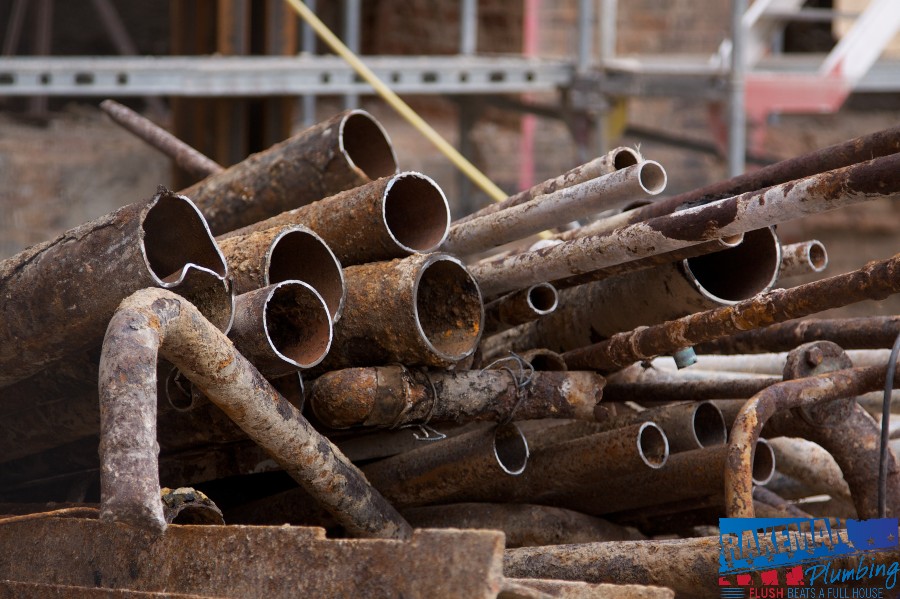Americans are more concerned than ever that drinking water be kept as pure as possible, especially after a serious contamination incident occurred in Flint, Michigan in 2014. Tighter standards and an increased scrutiny of what is permitted in water supplies has made them increasingly safer from a national perspective.
However, the reality is that the safety of your drinking water can be compromised at the very end of its passage into your home if your plumbing is substandard. Below is more information on the dangers of lead pipes, how you can identify if your pipes are made from lead and what you should do if you discover lead pipes in your home.
The Use of Lead Pipes for Drinking Water
The Roman Empire was among the first civilizations to incorporate running water into the everyday lives of its populace. Water was transferred by aqueducts to the cities, then distributed locally using lead pipes.
Lead was viewed as an ideal material for making water pipes, as it is malleable, inexpensive and resistant to corrosion. Its use was widespread in Rome and continued throughout history up until the early 1900s in the United States.
By the late 1800s, scientists discovered that lead is highly toxic to humans and can cause serious health problems. Despite some industry advocates’ resistance to change, the use of lead water pipes was ended by the 1920s.
How Lead Pipes Can Endanger Human Health
Lead is commonly and safely used for a number of applications, but the danger it poses to human health makes it unsuitable for use in water pipes. Lead accumulates in the human body quickly, especially in children, and most people have relatively high concentrations of lead by the time they reach adulthood.
Once lead is inside the human body, it interferes with enzyme functioning and is substituted by the body for beneficial metals. This causes a variety of significant medical problems, such as brain and kidney disease, for those affected.
Lead is particularly dangerous to children and threatens their development both in the womb and after birth. It can cause severe behavioral and emotional problems, and lead can also stunt normal development as a child grows. In adults, lead can contribute to significant health problems such as infertility and anemia.
How to Determine If Lead Pipes Are Inside Your Home
Even though lead water pipes haven’t been installed in homes on a widespread basis since the 1920s, there are still millions of American dwellings that contain or are supplied by lead pipes. That is why it is important to know if lead pipes carry your home’s drinking water supply.
Fortunately, there are a few ways to easily differentiate between lead and other common, safe metals, such as copper or iron. Below are some simple tests that will help you evaluate your pipes.
Color
Lead pipes are colored a dull gray, while copper pipes are usually orange or gold in color; some copper pipes may appear green due to heavy tarnishing. Other metals, such as iron or steel, may also be gray if they are galvanized or haven’t rusted. Since lead doesn’t rust, any water pipe you find with a layer of reddish-brown rust will be safe.
Hardness
Lead is the softest metal used for pipes, and it is easily scratched by a sharp object. For example, if you scrape a lead pipe with the end of a nail, it will leave a visible gouge mark.
Copper is also soft, but scratches in copper will reveal the shiny orange metal beneath the surface. Iron and steel pipes may scratch, too, but it usually takes moderate pressure to achieve a substantial scratch.
Magnetic Characteristics
Lead is not a magnetic metal, so a magnet will not be attracted to lead pipes. Magnets are also not attracted to copper but will adhere to iron or steel pipes.
Contact a Plumber If Necessary
It is important to remember that not all of your water pipes are readily visible. For example, water pipes are usually buried between their connecting points with city water mains and their destinations.
In cases like this, you may be able to identify lead water pipes by examining where they connect to the water shut-off valve or meter. You can use the criteria above to help you determine the type of metal in use.
If you believe you have located lead pipes in your home or if you suspect that lead pipes are a possibility, it is important to contact a qualified plumber immediately. Rakeman Plumbers are able to verify whether pipes are made from lead and can also help you explore your options regarding a replacement.
Want more Rakeman Plumbing pipe talk?


Recent Comments